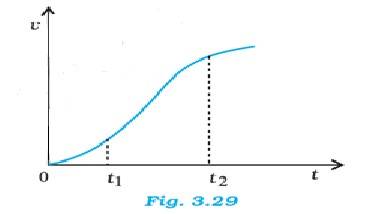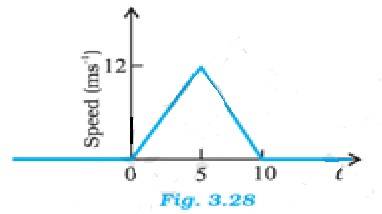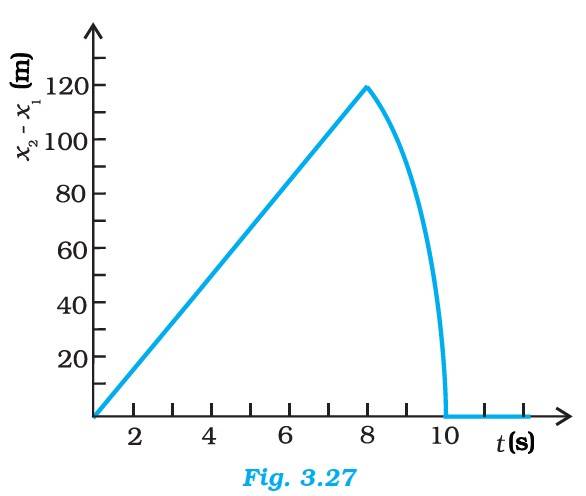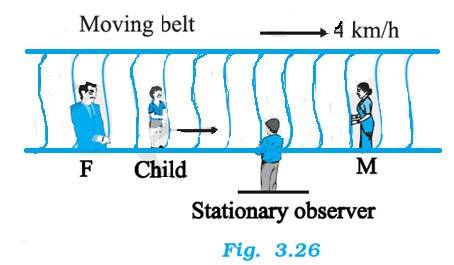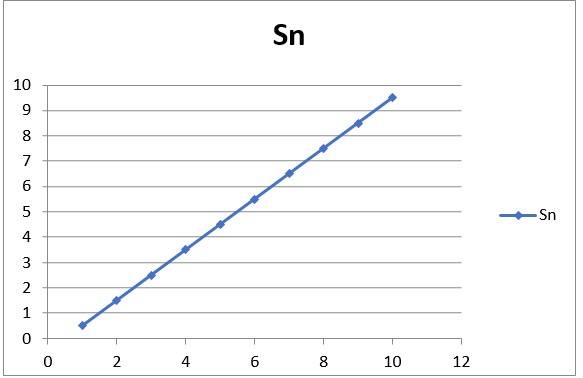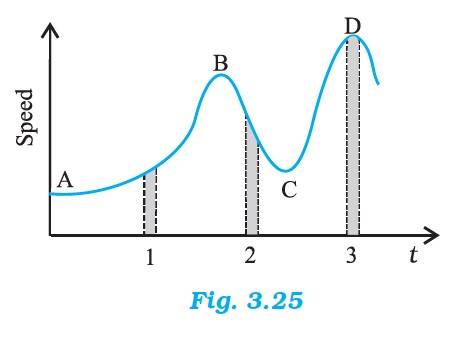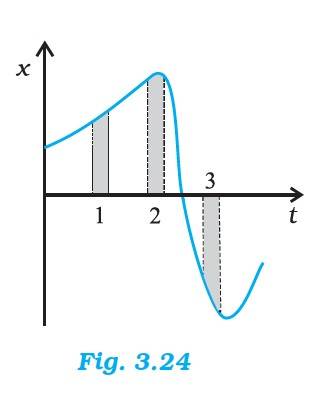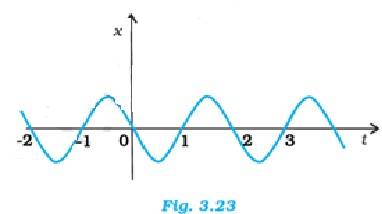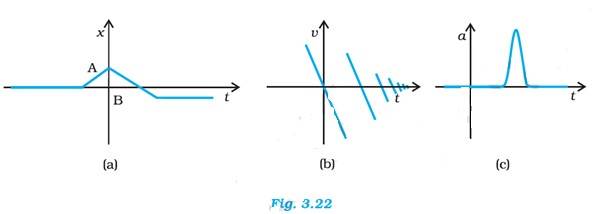physics ncert solutions class 11th
Get insights from 952 questions on physics ncert solutions class 11th, answered by students, alumni, and experts. You may also ask and answer any question you like about physics ncert solutions class 11th
Follow Ask QuestionQuestions
Discussions
Active Users
Followers
New answer posted
5 months agoContributor-Level 10
3.28 The graph has a non-uniform slope between the intervals t1 and t2 – the graph is not a straight line. The equations (a), (b), and (e) do not describe the motion of the particle. Only the relations (c), (d) and (f) are correct.
New answer posted
5 months agoContributor-Level 10
3.27
(a) Distance travelled by the particle between t = 0 s and t = 10 s is the area of the triangle = (1/2) x base x height = (1/2) x 10 x 12 = 60 m
The average speed of the particle is 60/10 m/s = 6 m/s
(b) Distance travelled by the particle between t = 2 s and t = 6 s
Let S1 be the distance travelled by the particle in time 2 to 5 s and S2 be the distance travelled between 5 to 6s.
For the motion from 0 to 5 sec, u = 0, t = 5, v = 12 m/s
From the equation v = u + at we get a = (v-u)/t = 12/5 = 2.4 m/s2
Distance covered from 2 to 5 sec, S1 = distance covered in 5 s – distance covered in 2 s
From the equation s = ut + at2 we
New answer posted
5 months agoContributor-Level 10
Initial velocity, u1 = 15m/s, acceleration, a = -g = -10 m/s
From the relation s1=s0+u1t+ (1/2)at2 where
s0 = cliff height, s1 = total height of the fall of the first stone, we get
s1 = 200 + 15t – 5t2 ………. (1)
When the stone hit the floor, s1 = 0, so the equation (1) becomes
0 = 200 +15t - 5t2 = t2 -3t – 40 = (t-8) (t+5) = 0
So t = 8s or -5s
Since the stone was thrown at t=0, so t cannot be –ve. Hence t = 8s
For the second stone,
Initial velocity, u1 = 30 m/s, acceleration, a = -g = -10 m/s
From the relation s2=s0+u1t+ (1/2)at2 where
s0 = cliff height, s2= total height of the fall of the s
New answer posted
5 months agoContributor-Level 10
Speed of belt = 4 km/h
(a) When the boy runs in the direction of motion of the belt, then the speed of the child observed by the stationary observer = 9 + 4 = 13 km/h
(b) When the boy runs in the opposite direction of motion of the belt, then the speed of the child observed by the stationary observer = 9-4 = 5 km/h
(c) Distance between the parents = 50 m = 0.05km
Speed of the boy, as observed by both parents = 9 km/h.
Time required by the boy to move to any parent = 0.05 / 9 h = 20s
New answer posted
5 months agoContributor-Level 10
3.24 The initial velocity of the ball, u = 49m/s
First Case: When the ball returns to his hands, total displacement = 0
From the relation s = ut + 0.5at2, we get 0 = 49t + 0.5 (-9.81) t2
4.905 = 49t Hence t = 10s
Second Case:
As the lift started moving up with a speed of 5 m/s, the initial velocity of the ball = 49 + 5 m/s = 54 m/s
If t' is time for the ball to return to his hand, the displacement of the ball will be = 5t'
From the relation s = ut + 0.5 x at2, we get
5t' = 54t' + 0.5 * (-9.8) t'2
49t' = 4.9 t'2
t' = 10 s
New answer posted
5 months agoContributor-Level 10
3.23 The distance covered by the 3 wheeler on a straight line in the nth second can be expressed as:
Sn = u + a (2n-1)/2 …… (1),
Where
a = acceleration
u = initial velocity
n = time = 1,2,3, ……., n
Given, u = 0, a = 1m/s2, from equation (1) we get Sn = (2n-1)/2 ……. (2)
With various values of n, we get Sn
n Sn
1 &
New answer posted
5 months agoContributor-Level 10
3.22 The change in the speed with time is maximum in interval 2. Therefore, the average acceleration is the greatest in magnitude in interval 2
The average speed is maximum in interval 3
The sign of velocity is positive in intervals 1,2 and 3
Acceleration depends on the slope. The acceleration is positive in interval 1 and 3, as the slope is positive. The acceleration is negative in interval 2, as the slope is negative
Acceleration at A, B, C and D is zero since the slope is parallel to the time axis at these instants
New answer posted
5 months agoContributor-Level 10
3.21 The average speed in Interval 3 is the greatest and in Interval 2 is the least.
The average velocity is +ve in Interval 1 & 2 and –ve in Interval 3.
New answer posted
5 months agoContributor-Level 10
3.20 In simple harmonic motion, the acceleration is expressed as a = - 2x, where is the angular frequency.
(a) At t = 0.3 s, position x is negative, velocity v is negative and acceleration a ( from above equation) will be positive
(b) At t = 1.2 s, position x is positive, velocity is positive, acceleration a will be negative
(c) At t = -1.2 s, position x is negative, velocity is positive and acceleration will be positive.
New answer posted
5 months agoContributor-Level 10
(a) This graph is a Displacement-Time Graph (x- t) that shows the displacement increasing From A to B, and decreasing From B to C. The graph may represent a carom board where the striker hits the edge, rebounds with reduced speed, then moves in the opposite direction, hits the opposite wall and stops.
(b) This graph is a Velocity-Time Graph (v- t) that shows Sudden spikes and drops in velocity. There is a rapid change in velocity. This graph may represent a ball that falls on the ground from a certain height and rebounds with a reduced speed
(c) This graph is an Acceleration -Time Graph (a- t) that shows an instantaneous spike in ac
Taking an Exam? Selecting a College?
Get authentic answers from experts, students and alumni that you won't find anywhere else
Sign Up on ShikshaOn Shiksha, get access to
- 65k Colleges
- 1.2k Exams
- 682k Reviews
- 1800k Answers

